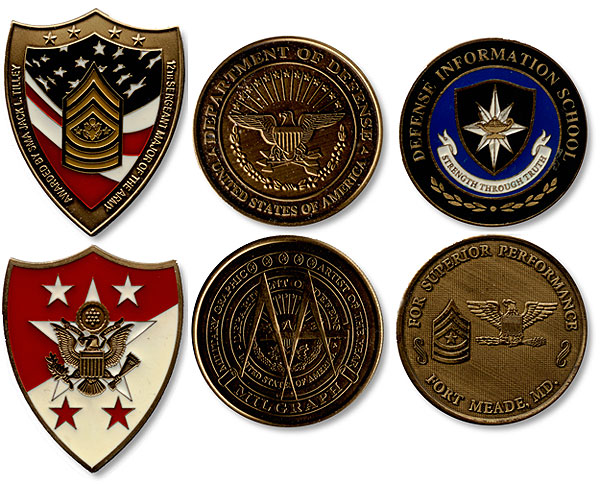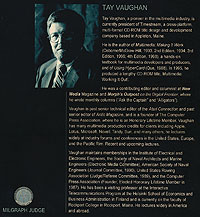|
Vaughan Family Timestream® Maps |
| Home Biography People Places Multimedia: Making It Work On the Water Writings/Presentations |
Ft. Meade
Defense Information School
From: "Thomas, John Mr. DINFOS/VI" [ThomasJI@DINFOS.OSD.MIL]
To: "'info@timestream.com'" [info@timestream.com]
Subject: MILGRAPH Competition
Date: Mon, 4 Mar 2002 13:40:53 -0500
I'm writing in reference to a Military Graphics Artist of the Year
(MILGRAPH) Competition. I do apologize for contacting you out of the blue like this, we have an event later this month. We contact industry professionals to participate in the judging of the annual competition. Mr. Vaughan's work has been used as a reference and inspiration in the Basic Graphics Course curriculum since 1994. I would be very grateful if I could speak with Mr. Vaughan in reference this event.
Thank you for your time and consideration.
John I. Thomas
GS-11, DoDC
Academic Director
Media Department
So I went to Ft. Meade.
That place was mentioned often during my childhood: in the mid 1940's my father had been posted there as a recently-graduated army physician/psychiatrist to help shell-shocked patients returning from the Second World War. PTSD had not yet been defined. In the family album, I am a toddler playing in front of barracks. In family lore, it's where my father carefully tended a small watermelon patch behind his barracks and, when he went to pick them for his birthday in August, all had been stolen the night before.
Once registered with Security and onto the base through the concrete barrier maze past weapons-carrying guards, I drove around a bit before checking in at the BOQ for the overnight. Across an untended field of dry scrub, excavators and bulldozers were tearing down a row of dilapidated paint-peeling one-story barracks, just like the ones I grew up with in the family photo album. Didn't make me feel at home, though, just weirdly translated through fifty years. Wafting fine threads of time shivered and sang in the cotton ball of my memory.
Judging the competition was done in an open auditorium with public discussion among the panelists. Students were encouraged to attend and listen to the judges' comments and reasoning as they made their decisions. During a break, I briefly lectured to the forty or so observing students, a soliloquy, about the specialness of creativity.
A side door opened mid-stream in my soliloquy, and with some commotion, all the students and faculty in the room stood to attention. People behind me stood as well. I was already standing. The room went quiet.
It was Jack Tiley, 12th Seargeant Major of the Army with a few aides. "At ease," he said, and conveyed a well-spoken compliment to the students and the work of the Defense Information School. On his way to Iraq, he said, the next day. He singled out the judges, delivered another discourse, and presented each of the Judges with his personal military coin as reward for their service.
I thanked him, shook his offered hand and took the coin, and then, being new to military coins, asked a simple question. "What can I use this for?" The room went suddenly silent in shared embarassment at my naive outburst. To his credit, Tiley hardly paused before explaining the value of his gift: "If you call my office at the Pentagon, I will see you." And he grinned.

Later, visiting with Rod Moon, a former student of mine from the Rockport Workshops program in Maine and a videography faculty member at the Defense Information School, I asked him about military coins. He said he had received one or two coins in his entire career, and they got him into trouble. Turns out, if you are sitting at a bar or in a gathering of other military folks and plunk down your coin (you have to "snap" it loudly against the bartop), it's a challenge. Those in the group who fail to produce their own coin to match must buy the next round of drinks. If all in the group produce a coin, the initiator himself must buy for all, and loses the challenge. The process is called "coining" or "being coined."
Well, Rod was at a work conference in a hotel where, after dinner, a number of folks in his group went down to the spa and hot tub. Seeing them from the balcony of his room, he figured he would nail them with his coin. Slipping on his trunks and with coin in hand, he joined them. When he snapped his coin onto the rim of the tub, all went silent. But one by one, eight men pulled out from that funny little inch-square pocket in their swim trunks eight coins and snapped them down, too. It was an expensive night for Rod.
I carry a round military coin with me in my wallet, just in case such an event might occur to me. Not likely. Over time, the metal has made a circular impression in the leather, visible on the exterior surface, about the diameter of a condom. Occasionally, when purchasing groceries, the circle reminds me of high school days, when I was more optimistic than now.

